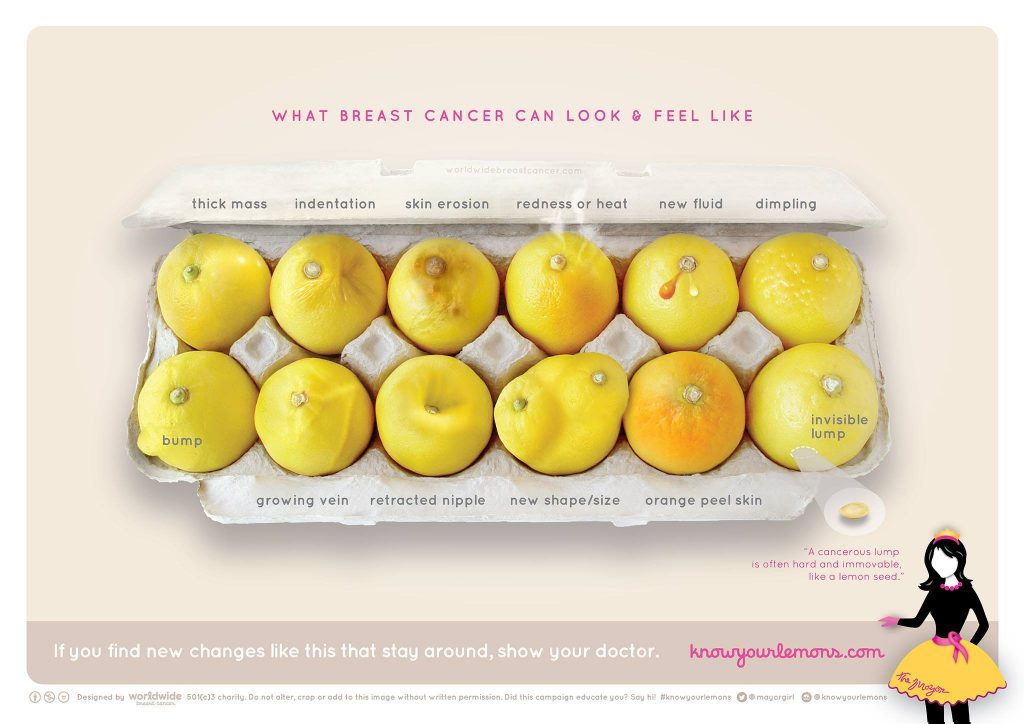A patient shared a viral image on Facebook showing 12 different types of breast cancer signs. It was shared over 30,000 times.
Erin Smith Chieze had found a similar image years before posting this one featuring lemons, which helped her know that she had breast cancer. She stresses on her Facebook post that breast cancer is serious and that potential patients do not need “cute hearts,” rather than real information and accurate pictures that help produce a reliant self-diagnosis.

On her Facebook post, Erin states that she saw a picture in December of 2015 explaining how breast cancer looks like. Her tumor was non-palpable, and days later she was diagnosed having breast cancer. She assures that a picture of what to look for helped her know about her disease.
‘How does it look like rather than how it feels’
She suggests that the lemon photo captures the idea of the one she saw before being diagnosed. Erin prompted her contacts to share the photo, although she was not able to find the original photo she had found earlier.
Apparently, the lemon photo was available at www.worldwidebreastcancer.org, and the designer for the photograph, Corrine Ellsworth Beaumont, contacted Erin, asking her to cite the source of the image and to add the Facebook page of the organization responsible for the Know your Lemons campaign.

The post allowed users to comment their thoughts concerning the photo, where many complain about breast cancer shareable content that does not correctly address the disease.
One of the most common misconceptions about breast cancer is that it only affects women. Although women do account for the majority of breast cancer cases, men can get it too, mainly due to a severe family history of cancer. In women, only 1 out of every 10 cases is due to genetic causes. The mutations responsible for the disease are common among specific ethnic groups, such as people of Norwegian, Dutch, and Jewish descent.
Breast cancer rarely causes any pain, and it is easy to oversee from the lack of symptoms. Cancer organizations recommend regular breast checks, including mammography, and other clinical exams. Because patients cannot go to the doctor every single day to check their breasts, one of the better solutions is to become familiar with one’s breasts and to report any lump, discharge, or swelling to a doctor.
Breast cancer incidence increases with age, which is why older women should not stop getting mammograms, seeing that the greatest risk starts when a woman turns 60 years old. The risk increases steadily, going from 1 in 23 for a lady in her 30s up to 1 in 8 for an 85-year-old.
Lumps are just one sign of breast cancer, while there are other changes such as skin irritation, nipple retraction, redness, thickening of the nipple, and even swelling of the lymph nodes under the arm. The lemon photograph may help spot these symptoms, but the best method to determine if the patient has cancer is to undergo a mammogram, hopefully, before any sign is seen at all.
Source: Healthy Women
